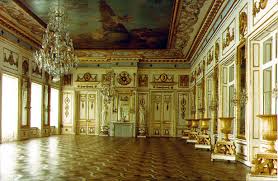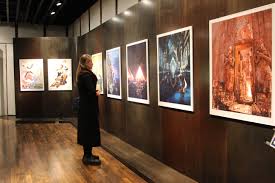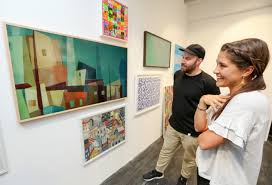digital artist
LENINGRAD SCHOOL OF PAINTING (part 4)
 However, in 1928, after a series of publications in the journal Revolution and Culture, edited by N. I. Bukharin, supported by the section of literature and art of the Communist Academy, a new aggravation of the ideological struggle in art began. Realistic traditions and easel art were opposed by new types of creativity (photography, design, cinema), and models of Western modernism were offered as a standard. This had consequences for Vkhutein (as the Academy of Arts was called in 1923). The directors were accused of restoring academism. The dissatisfaction of some teachers and students of the institute was supported by the art groups “Proletariat”, “Circle”, a group of P. N. Filonov, who opposed, among other things, any control in the development of culture in general and the art school in particular. Continue reading
However, in 1928, after a series of publications in the journal Revolution and Culture, edited by N. I. Bukharin, supported by the section of literature and art of the Communist Academy, a new aggravation of the ideological struggle in art began. Realistic traditions and easel art were opposed by new types of creativity (photography, design, cinema), and models of Western modernism were offered as a standard. This had consequences for Vkhutein (as the Academy of Arts was called in 1923). The directors were accused of restoring academism. The dissatisfaction of some teachers and students of the institute was supported by the art groups “Proletariat”, “Circle”, a group of P. N. Filonov, who opposed, among other things, any control in the development of culture in general and the art school in particular. Continue reading
VLADIMIR SCHOOL SCHOOL SCHOOL (part 2)
 By the 1970s, the recognizable style of painting, common to all representatives of the Vladimir school, was finally formed. The landscape space in them, as a rule, is reduced to a plane. The plans are brought together, the composition is extremely simple, the horizon line in the paintings is deliberately overestimated. This set of techniques gives reason to talk about the closeness of their aesthetics with the stylistic principles of Rostov-Suzdal icon painting … The letter in Vladimir painting is temperamental, the texture is particularly striking. A completely unique find of Vladimirites is the use of experimental bulk soils that enhance the decorative effect of textured writing. Bright, pasty painting on the textured soil, different heights of the colorful relief in the picture increased the living trepidation of the depicted, enhanced the contrast of the color scheme. Continue reading
By the 1970s, the recognizable style of painting, common to all representatives of the Vladimir school, was finally formed. The landscape space in them, as a rule, is reduced to a plane. The plans are brought together, the composition is extremely simple, the horizon line in the paintings is deliberately overestimated. This set of techniques gives reason to talk about the closeness of their aesthetics with the stylistic principles of Rostov-Suzdal icon painting … The letter in Vladimir painting is temperamental, the texture is particularly striking. A completely unique find of Vladimirites is the use of experimental bulk soils that enhance the decorative effect of textured writing. Bright, pasty painting on the textured soil, different heights of the colorful relief in the picture increased the living trepidation of the depicted, enhanced the contrast of the color scheme. Continue reading
HISTORY OF THE DEVELOPMENT OF THE DUTCH AND FLEMAND STILL LIFE (part 2)
 The developed manufactory, which arose on the basis of marine industries and shipping, a huge colonial economy and a leading role in world trade, provided Holland with an economic upsurge. Natural sciences are being developed to cater for the increased needs of the economy. Culture is blooming. Holland is becoming the center of European typography, and its universities enjoy universal fame. Significant successes are made by fiction, professional Dutch theater appears, outstanding works arise in the field of architecture, graphics flourish, and finally, the most characteristic, specifically Dutch art – painting reaches unprecedented heights.
The developed manufactory, which arose on the basis of marine industries and shipping, a huge colonial economy and a leading role in world trade, provided Holland with an economic upsurge. Natural sciences are being developed to cater for the increased needs of the economy. Culture is blooming. Holland is becoming the center of European typography, and its universities enjoy universal fame. Significant successes are made by fiction, professional Dutch theater appears, outstanding works arise in the field of architecture, graphics flourish, and finally, the most characteristic, specifically Dutch art – painting reaches unprecedented heights.
We pay tribute to the brave Dutch seafarers, respect the achievements of Dutch opticians and doctors, philosophers and lawyers, but Dutch painters have overshadowed their glory for centuries. Continue reading




